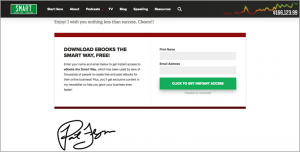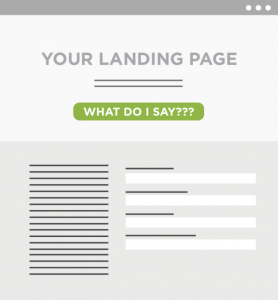Use your event’s valuable content to boost community engagement and position yourself not just as an event organizer but as a strategic partner.
Registration launch day for my client’s global conference is just a few days away. The team has been in overdrive for the past two months, with workstreams gearing up for branding, sponsorships, sales and partner incentives, session selection, keynote planning. The pace is frantic, so you can already guess how much time we’ve spent on post-event marketing.
Zero. Zip. Exactly none.
In the frenzy of event planning, what happens after the event isn’t yet on anyone’s radar. Plus, it’s not a KPI that’s commonly attributed to the event team. Last time, we talked about how to unlock more value from your event content, and the value of original content such as breakout sessions in your marketing plan.
But what happens when there isn’t a digital component for your in-person conference? Let’s dive into some effective strategies to keep the momentum (and the pipeline) going from your enormous event investment.
Capture the moment: Recaps and interviews
Capturing the essence of your event’s impact goes beyond mere attendance; it’s about preserving the knowledge that was shared. Here are three effective ways to document speaker insights:
- Session summaries. Start with the slide decks prepared by your speakers and write detailed summaries of each session. Or, ask your speakers to create a recap of key points, interesting quotes, and personal takeaways, leveraging the notes and presentations they used for their talk.
- Speaker interviews. You can never capture all the information about a topic in a typical 45-minute breakout, so do a few post-talk interviews that allow speakers to expand on their session content. And encourage speakers to write their own articles or blog posts about their session.
- Attendee feedback. Be sure to get reactions from attendees. Ask for their takeaways on a particular breakout, their experiences with networking and social activities, and the value they derived from the conference. If you’re using interactive badges, your vendor will be able to give you near-real-time updates on the best-attended sessions that you can transform into blog posts, articles, or social media content.
Beyond the event: Engage with visuals
Keeping the buzz going after your event isn’t only about blog posts. Here are four creative ways to keep everyone talking and capture insights at a glance:
- Webinars. Invite a couple of speakers from your event to talk about their sessions in a panel discussion. Record it or host it live, like this post-event roundtable featuring three presenters from MOps-Apalooza, and follow up with an AMA to build engagement.
- Infographics. Capture key statistics, trends, or insights from your events or use an infographic to thank sponsors and attendees like this one from The Ottawa Hospital Foundation. Infographics are a seldom-used pre-event tactic, but you can spark a lot of interest with a visual presentation of conference content like Niantic did for a recent Pokémon GO Community Day. Bonus: infographics are bite-sized and fun to share, an easy way to expand reach.
- Sketchnotes. If you’re lucky enough to have a dataviz artist on your team, sketchnoting can be a creative way to visually summarize sessions. A professional artist can also turn notes into engaging images after the event, like these sketchnotes for Novartis’ European Patient Innovation Summit or the Apple iPhone 15 event.
- Interactive content. Quizzes and polls aren’t just fun; they’re a smart way to keep your audience hooked. Running a quick poll pre-event can also help you get a feel for what your audience is most curious about so you can tailor your talk, like Riskified’s Melanie Reid did on LinkedIn before her session at CEMA..
Engage your community: Leverage user-generated content
Your community is one-of-a-kind. No other event attracts exactly this mix of personalities. Let them shine, and capture the unique atmosphere of your event in real-time with these strategies:
- Community content. Don’t overlook the gold mine of user-generated content (UGC). Even if you didn’t hit the record button, chances are, your attendees did. A quick search of your event’s hashtag on Twitter and LinkedIn can reveal some gems, like a cool video walkthrough of your expo or an attendee sharing how they’re using what they learned at your event to make a difference.
- Q&As and AMAs. Hosting live sessions on social media is another way to engage attendees and answer burning questions from the event. You can get speakers and experts to jump in on platforms like Twitter, Facebook, or LinkedIn for a live chat. And consider a live online event during the conference: just like the audio event at Apple’s Worldwide Developer Conference, it can keep the conversation buzzing and boost engagement.
- Live interviews. There’s nothing like live footage to capture the culture of your event. Take a page from DEF CON’s playbook: they turned a spotlight on their community by dispatching video teams throughout Caesar’s Forum to film attendees and document their experiences, adding a dynamic layer to their event storytelling.
Checklist: 4 strategies for post-event marketing success
Event content drives activations year-round, so ask colleagues in sales and customer success: do they need top-of-funnel content? Product-specific information? Feedback from users or prospects? Then, map out a plan to capture that information and create content for it.
Put a writer (or two) on task to take notes in the keynote and important sessions. Share the speaker’s slides with the writer in advance and be sure they understand the marketing needs, so they can be ready to note key takeaways and capture important quotes.
Ask your social team to share top highlights using the event hashtag, both pre-event and during the conference. Contact posters for further thoughts or just include their posts in an event wrapup blog or newsletter article.
If you’re planning a Q&A on social media during the event, or a webinar after the event, promote it widely in your event comms and share links to make it easy for people to attend.
Track your metrics to prove your value
Planning ahead for post-event marketing shouldn’t be an afterthought; it’s a strategic move. Collaborating with other departments helps align your event content with broader business goals. Spotlighting UGC not only fosters a sense of community but also provides you with authentic content that resonates with a wider audience.
Finally, let’s talk numbers: as Bizzabo’s 2023 survey, “The state of in-person B2B conferences,” reveals, more than 80% of event organizers see in-person events as their most impactful marketing channel. Yet the challenge lies in proving this impact. This is where tracking metrics comes into play. By quantifying your event’s success — in MQLs, engagement rates or pipeline — you demonstrate the tangible value of your events. This isn’t just about justifying the budget; it’s about showcasing your event as a key contributor to the organization’s bottom line.
In an era where in-person interactions are more valued than ever, the ability to align your event with revenue and clearly demonstrate its impact is invaluable. It positions you not just as an event organizer but as a strategic partner in your organization’s growth. So, as you plan your next event, remember: The real work begins when the lights go out.
The post How to repurpose marketing event content appeared first on MarTech.
(2)








